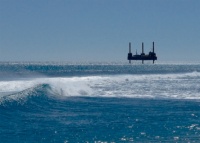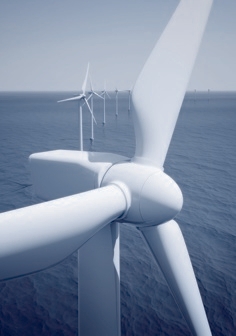
’The same navigation technology and seismic technology we’ve used in the oil-and-gas industry can also be used in offshore renewables,’ explained Luijnenburg. ’Putting a huge wind turbine on the ocean floor is extremely difficult because you need to get the angle exactly right. This has to be done on a calm day and that is almost always impossible, as these things are placed in some of the windiest places in the world.’
Fugro recently integrated a range of ESA-developed satellite systems with Russian systems to provide a single global navigation system. During drilling-rig operations, the system lets engineers accurately position their equipment. The offshore renewables industry uses it to position sensors and wind turbines.

’The idea that you need to divert investment one way or the other is a non-issue because the same technologies are used in two different areas,’ said Luijnenburg. ’We’ve developed a “met” ocean buoy, which collects meteorological and oceanographic data for the oil-and-gas industry. We use the same in the renewables industry. In the same way cable installation is what we’ve done in offshore oil and gas, we use the same in renewables. It’s no different. A lot of companies involved in renewables have not been involved in oil and gas; they tend to want to reinvent the wheel. There needs to be better communication. The renewables industry can learn a lot from the oil-and-gas industry.’
In Depth
Robotic Glider
An unmanned robotic glider crossed the Atlantic Ocean last year
In April last year, a group of students and scientists from Rutgers University launched an underwater robotic glider off the coast of New Jersey.
Eight months later, the 2m-long, 61kg glider became the first unmanned underwater robot to have successfully crossed the Atlantic Ocean. It made its formal entrance into the port of Baiona, Spain – the same place where Christopher Columbus announced his discovery of the New World in 1493.
The glider, nicknamed Scarlet Knight, transmitted data more than 1000 times via satellite during the mission, which was tracked online.
Researchers at Rutgers are now hoping to send another glider on an ambitious mission to circumnavigate the world.





Red Bull makes hydrogen fuel cell play with AVL
Formula 1 is an anachronistic anomaly where its only cutting edge is in engine development. The rules prohibit any real innovation and there would be...